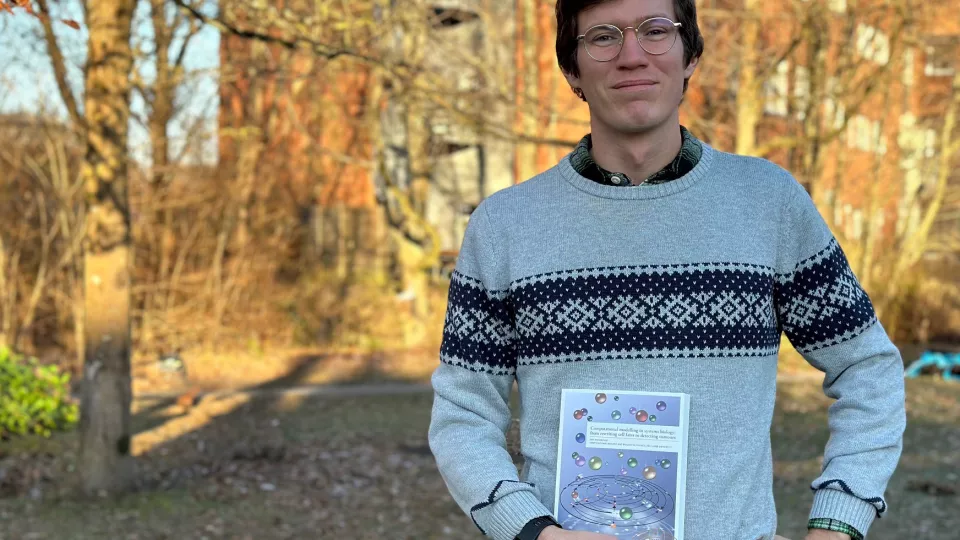His thesis, 'Computational modelling in systems biology: from rewriting cell fates to detecting tumours', looks at the fate of cells and how machine learning could enable surgeons to remove tumour cells with greater precision.
"Of course, it would be exciting if my research had implications for future cancer treatments and degenerative diseases such as Alzheimer's and Parkinson's," says Emil Andersson.
Reprogramming the body's own cells
The first project in the thesis is about cell biology. The body has about 10 trillion cells of 200 different types, and it is the switching on and off of genes in the cells' DNA that determines what kind of cell it is. While human embryos contain stem cells that can develop into any type of cell, there are ethical dilemmas about using cells from embryos for medical purposes. There is also a risk that the body will reject cells transplanted from another person. It would therefore be a medical breakthrough to be able to reprogram a person's own cells for new uses.
Understanding what blocks
"I have developed a general method to describe gene networks with energy landscapes containing different cell states. In the laboratory, our partners are trying to reprogram cells so that, for example, a skin cell can become a brain cell. In the majority of cells there is something that blocks this, and our task is to try to understand this process with the help of computational models so that it can be made more efficient," says Emil Andersson.
By formulating equations that describe the networks, the researchers can simulate the result of switching genes on and off and thus gain a better understanding of what is actually happening.
Machine learning to help surgeons
In another part of his work, he has collaborated with surgeons at Skåne University Hospital and physicists. When a surgeon removes a cancerous tumour, he or she operates with a specific margin to ensure that all the tumour cells are included. This means that healthy tissue is also removed, which can have functional and aesthetic consequences, especially in areas such as the face.
In the project, tumour and healthy tissue were photographed using a hyperspectral camera, which collects data from 235 wavelengths of visible and infrared light.
Measuring the diameter of the tumour
"We have used a specific type of machine learning models, called artificial neural networks, which have been trained to recognise the spectra in the pixels of the images. 'They are trained on each individual patient and we have tested how well the model works using cut-out tumours that a pathologist has examined,' says Emil Andersson.
The noise that occurs in individual pixels in the images is removed using a segmentation algorithm that also finds the contours of the tumour and measures its diameter. The hope is that surgeons will eventually have a new tool that scans the tissue and shows where the tumour cells are located. This could potentially minimise interventions in cancer treatments.
